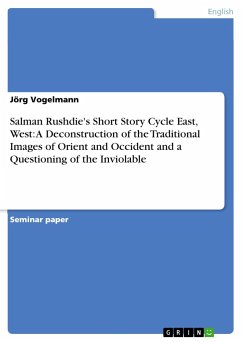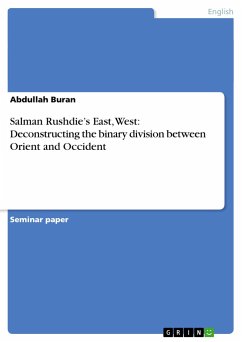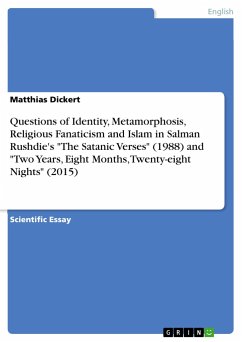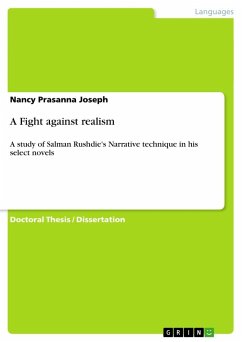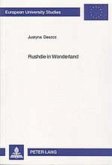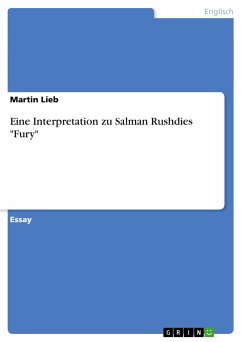Seminar paper from the year 2005 in the subject English Language and Literature Studies - Literature, grade: 1,0, University of Stuttgart (Institut für Literaturwissenschaft - Neuere Englische Literatur), course: Literary Studies: "Late Imperial to Postcolonial Literature", language: English, abstract: Considering the title of Rushdie's short story cycle East, West one question quickly evolves in the recipient's mind: Does the comma in the title stand for a separator keeping apart two cultural blocks, namely an Eastern and a Western world, or can it also be considered as a linking bridge? However, when reading Rushdie's colourful stories it becomes clear that he even goes far beyond this bridge notion. The author doesn't only try to link or reconcile the two parts but he as a migrant between the two worlds ironically plays with the traditional images of Orient and Occident: By applying a huge variety of genre, styles, structures and techniques he finally deconstructs the traditional notions of the two entities. In doing so he undermines the reader's conventional assumptions about the East and West and makes clear that in recent times reality cannot be pressed into or described by such simple schemes any longer. When Rushdie writes that "literature is, of all the arts, the one best suited to challenging absolutes of all kinds", this is exactly what he does in "East, West". Nothing is "sacred" any longer, and thus most of the stories can be considered as attempts to ironically challenge and deconstruct sanctities and weak sides of Eastern and Western culture. By this critique he makes clear that within the global village these two parts of the world are closely interrelated and cannot be considered as opposing entities. Thus, Rushdie goes beyond the common debates about whether there is a divide of the world into East and West or not.However, as the short stories in East, West fulfil all more or less this deconstructive design on the one side and represent on the other side the richness and diversity of human life in the different parts of the world they naturally do not offer easy interpretations. Nevertheless, this paper tries to examine how Rushdie criticizes and deconstructs the traditional notions and absolutes of the East and West and how he takes apart these artificial entities. The thesis that Salman Rushdie deconstructs the typical images and questions the inviolable both of the Orient and Occident and thus describes the world as a complex, interrelated system will be the paper's central question. In this respect one "Eastern" story of his short story cycle East, West - "The Prophet's Hair" - and one "Western story" - "At the Auction of the Ruby Slippers"- will be considered. These analyses will then provide the basis for the conclusion.

